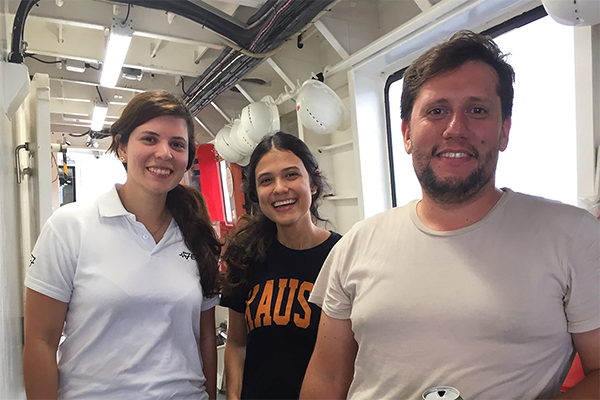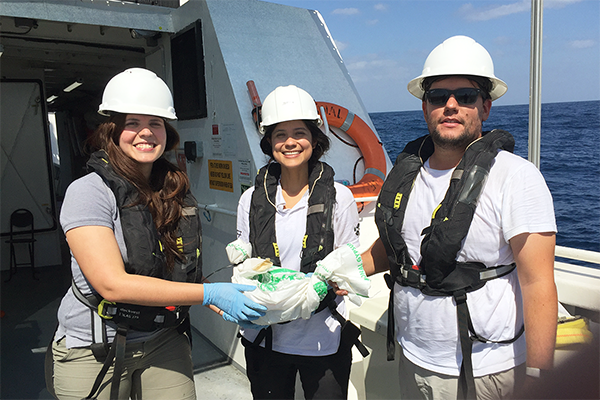.jpg?sfvrsn=39330263_0)
.jpg?sfvrsn=39330263_0)

28 February, 2019

From left to right: PhD students Marisol Salva and Gloria Castro, and research scientist Marco Terzariol.
An EGEL team has recently returned from an expedition to the Atlantis II Deep – one of the most hydrothermally active basins in the Red Sea. Sustained hydrothermal venting has produced a high temperature, hypersaline stratified brine, and a large deposit of metalliferous sediments including copper, zinc and silver. This deposit is gaining increased interest as a potential resource should deep sea mining become a reality.


“This time of year the sea can be rough, so we waited for our window and tried to get as much done as possible in a few days,” says Marco Terzariol.
During this 4-day expedition on board the KAUST owned R/V Thuwal, team members Marco Terzariol, Gloria Castro, Marisol Salva and J.Carlos Santamarina were able to obtain critical information to help understand key features of the Atlantis II. The researchers collected data on the brine pools using CTD drops and water sampling. They also collected 3-meter long sediment cores to study and compare these metalliferous accumulations with others in the Red Sea. The team was able to observe and document the highest temperature ever recorded in the Atlantis II brine pool.


The researchers also sampled and profiled nearby deeps. These data will help assess the hypothesized interaction between these deeps and their associated brine pool. On subsequent expeditions, EGEL researchers will focus on the mining potential of the Atlantis II metalliferous sediments.
Learn more about EGEL on their center website.